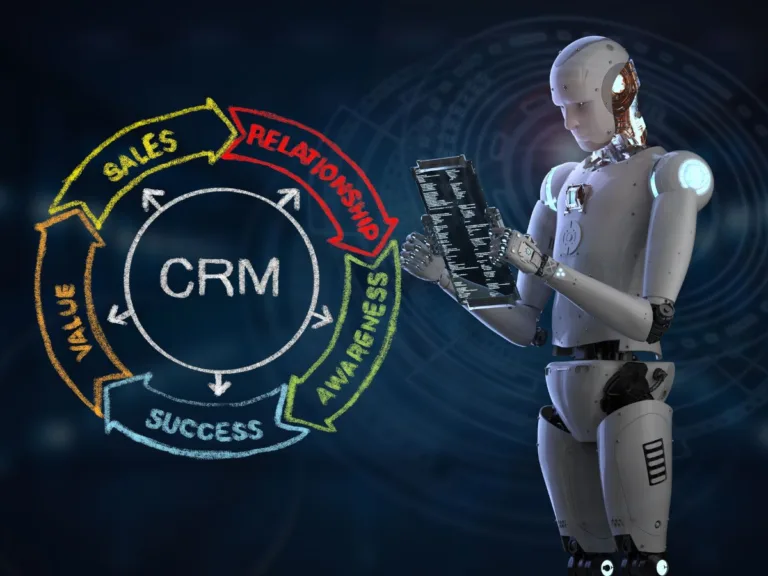Drip Campaigns Demystified: A Simple Guide To Marketing Automation
Overwhelmed by the concept of drip campaigns and marketing automation? Fear not! In this simple guide, we will break down the complexities of drip campaigns and marketing automation to help you understand their importance in your marketing strategy. By the end of this post, you will have a clear understanding of how drip campaigns work, why they are crucial for engaging with your audience, and how they can dramatically improve your marketing efforts.
Key Takeaways:
- Drip campaigns are a series of automated emails sent over time to engage with your audience and nurture leads.
- Personalization is key in creating effective drip campaigns, as it helps build relationships and keeps your audience engaged.
- Segment your audience based on their behavior, interests, or demographics to send targeted and relevant messages that resonate with them.
- Use analytics to track the performance of your drip campaigns and optimize them for better results, such as open rates, click-through rates, and conversions.
- Automation tools can help streamline the process of creating and managing drip campaigns, making it easier for marketers to reach and engage with their audience efficiently.
Understanding Drip Campaigns
Definitions and Basic Concepts
With the rise of digital marketing, drip campaigns have become an necessary tool for marketers looking to engage with their audience in a more personalized and automated way. A drip campaign is a series of pre-written, automated messages sent to customers or prospects over time. These messages are triggered based on specific actions or timelines, aiming to nurture leads and guide them through the sales funnel.
The Importance of Drip Campaigns in Digital Marketing
Little can be more powerful in digital marketing than a well-planned drip campaign. Drip campaigns allow marketers to stay top-of-mind with their audience, deliver relevant content at the right time, and drive conversions without being too pushy or overwhelming. They create a seamless experience for the consumer, fostering trust and building brand loyalty over time. By providing valuable information and guidance throughout the customer journey, drip campaigns help businesses increase engagement, sales, and customer retention.
Types of Drip Campaigns
It is vital to understand the different types of drip campaigns that can be utilized in marketing automation to effectively engage with your audience. Below are some common types of drip campaigns that can help you achieve your marketing goals.
| Welcoming New Subscribers | Nurturing Leads |
| Post-Purchase Follow-Up | Renewal Reminders |
| Educational Series | Re-Engagement Campaigns |
Welcoming New Subscribers
If you want to make a great first impression on your new subscribers, a welcoming drip campaign is key. This type of campaign aims to introduce your brand, set expectations, and build a relationship with your new audience members. By providing valuable content and information, you can engage your subscribers right from the start.
Assume that the first few emails in this drip campaign will be crucial in setting the tone for your ongoing communication with these subscribers.
Nurturing Leads
There’s no denying the importance of nurturing leads to guide them through the sales funnel. A series of drip emails can be used to educate leads about your products or services, address their pain points, and move them towards making a purchase. By segmenting your leads based on their behavior and interests, you can deliver personalized content that resonates with them.
A well-crafted lead nurturing drip campaign can increase conversion rates and establish long-lasting relationships with your leads.
Post-Purchase Follow-Up
While acquiring new customers is important, retaining them is equally crucial for your business’s success. A post-purchase follow-up drip campaign can thank customers for their purchase, provide support resources, and encourage repeat purchases. By keeping in touch with your customers even after the sale, you can build loyalty and encourage them to become brand advocates.
Subscribers who feel valued and supported are more likely to return to your business for future purchases.
Renewal Reminders
On subscription-based businesses, sending renewal reminders through drip campaigns can help ensure that your customers continue using your services or products. These reminders can notify customers of upcoming expirations, offer incentives for renewal, and make the renewal process as seamless as possible. By automating these reminders, you can reduce churn and keep your revenue stream steady.
Another benefit of renewal reminders is the opportunity to up-sell or cross-sell additional products or services to your existing customers.
Educational Series
Leads who are in the awareness stage of the buying process can benefit from an educational series drip campaign. By providing valuable information and insights related to your industry or products, you can position your brand as an authority and guide leads towards making an informed purchasing decision.
Nurturing leads with educational content can build trust and credibility with your audience, ultimately increasing the chances of converting them into customers.
Re-Engagement Campaigns
While inactive subscribers may seem like a lost cause, re-engagement campaigns can help you win them back. These campaigns are designed to reignite interest in your brand by offering enticing deals, asking for feedback, or providing valuable content to rekindle the relationship. By segmenting your inactive subscribers and tailoring your messages to their preferences, you can revitalize their engagement with your brand.
Types of re-engagement campaigns can bring back lost customers and improve your overall email engagement rates.
The Building Blocks of Drip Campaigns
Identifying Your Goals and Audience
If you want to run successful drip campaigns, the first step is to clearly define your goals and understand your target audience. Ask yourself what you aim to achieve with your campaign – whether it’s increasing sales, nurturing leads, or boosting customer engagement. Identifying your goals early on will help you tailor your messages and strategy accordingly. Equally important is understanding your audience; probe into their preferences, interests, and pain points to create personalized and impactful content.
Crafting the Right Message
Your message is the heart of your drip campaign. Crafting the right message involves creating content that resonates with your audience, addresses their needs, and drives them towards your desired action. Personalization is key here – use customer data to segment your audience and tailor messages that are relevant and valuable to each group. By providing the right content to the right people at the right time, you can significantly increase engagement and conversions.
Another aspect to consider when crafting your messages is the tone and style. Your emails should be consistent with your brand voice while also being compelling and engaging. Use a mix of educational content, promotions, and storytelling to keep your audience interested and motivated to take action.
Timing and Frequency Factors
Timing and frequency play a crucial role in the success of your drip campaigns. Sending emails at the right time can significantly impact open and click-through rates. Consider factors like time zones, industry norms, and the recipient’s behavior when scheduling your emails. Similarly, the frequency of your emails should strike a balance between staying top-of-mind with your audience and not overwhelming them with too many messages.
- Test different send times and days to optimize open rates
- Monitor recipient engagement metrics to adjust frequency accordingly
Building a successful drip campaign involves finding the sweet spot with timing and frequency. By continuously analyzing data and refining your approach, you can create a campaign that keeps your audience engaged and drives results. Knowing when and how often to reach out to your audience can make all the difference in the effectiveness of your campaign.
Tips for Effective Drip Campaigns
Now, let’s look into some necessary tips for creating effective drip campaigns that will help you maximize your marketing automation efforts. Whether you are new to marketing automation or a seasoned pro, these insights will guide you towards a successful campaign strategy.
Personalization Techniques
Clearly, personalization is key when it comes to drip campaigns. By tailoring your content to specific customer segments, you can create a more engaging and relevant experience for your audience. Utilize customer data to personalize email content, subject lines, and calls-to-action. This personal touch can significantly increase engagement and conversion rates.
Segmenting Your Audience for Greater Impact
With segmentation, you can divide your customer base into smaller groups based on similar traits or behaviors. This allows you to send targeted content that is more likely to resonate with each group. By segmenting your audience, you can deliver more relevant messages, leading to higher engagement and conversion rates. Understanding your audience is crucial for effective segmentation. Analyze customer data to identify common characteristics, preferences, and behaviors. By grouping customers based on these insights, you can tailor your drip campaigns to better meet their needs and interests.
Writing Compelling Subject Lines and Content
Subject lines play a critical role in determining whether an email gets opened or ignored. Marketers should focus on crafting compelling subject lines that grab customer attention and encourage them to click through. In addition, the content of your emails should be relevant, engaging, and valuable to customers. Personalized content that speaks to the recipient’s needs and interests can make a significant impact on engagement levels. Lines h3>Utilizing Visuals and Calls-to-Action Now, let’s talk about the importance of visuals and calls-to-action in your drip campaigns. Visual content such as images, videos, and infographics can help capture customer attention and convey your message more effectively. Including clear and compelling calls-to-action can guide customers towards the desired action, whether it’s making a purchase, signing up for a webinar, or downloading a resource. To create more impactful drip campaigns, make sure to incorporate visuals and calls-to-action strategically throughout your emails. These elements can enhance the overall customer experience and drive better results for your marketing automation efforts.
A Step-by-Step Guide to Setting Up Your Drip Campaign
Unlike traditional marketing campaigns, drip campaigns involve sending pre-written sets of messages to customers or prospects over time. These automated messages are triggered by specific user actions and are designed to nurture leads and drive conversions.
| Choosing the Right Marketing Automation Tools | Importing and Organizing Contacts |
| Marketing automation tools like HubSpot, Mailchimp, and ActiveCampaign can help streamline your drip campaign efforts. Consider the features you need, ease of use, and pricing when selecting the right tool for your business. | Now, before you start setting up your drip campaign, it’s imperative to import and organize your contacts within your chosen marketing automation platform. This step ensures that you can target the right audience with personalized messages. |
Organizing and Importing Contacts
Now, when importing contacts, make sure to categorize them based on factors like demographics, interests, or previous interactions with your brand. This segmentation will allow you to tailor your drip campaigns effectively and increase engagement rates.
Creating and Designing Email Templates
One of the key aspects of a successful drip campaign is creating visually appealing and engaging email templates. Personalization, compelling visuals, and a clear call-to-action are imperative elements to include in your templates.
When designing your templates, make sure they are mobile-responsive to ensure a seamless experience for all recipients. Testing different designs and formats can help you determine what resonates best with your audience.
Setting Up Triggers and Workflow
One important step in setting up a drip campaign is defining triggers that will initiate the automated email sequence. Triggers can be actions like signing up for a newsletter, downloading a resource, or making a purchase.
Guide your leads through the buyer’s journey by creating a workflow that maps out the sequence of emails they will receive based on their interactions with your brand. By setting up triggers and workflows, you can deliver timely and relevant messages to your audience.
Testing and Optimization
Campaign testing is a crucial part of drip campaign management. A/B testing your email content, subject lines, send times, and calls-to-action can help you optimize your campaigns for better engagement and conversion rates.
Email open rates, click-through rates, and conversion rates are key metrics to monitor and analyze during the optimization process. Use this data to make informed decisions and continually improve your drip campaigns for maximum effectiveness.
Evaluating the Pros and Cons of Drip Campaigns
After deciding to implement drip campaigns in your marketing strategy, it’s imperative to evaluate the pros and cons to understand the implications fully. Exploring both sides will help you make an informed decision on whether drip campaigns are the right approach for your business.
| Pros | Cons |
| 1. Personalized Communication | 1. Risk of Overwhelming Subscribers |
| 2. Increased Engagement | 2. Potential for Automation Errors |
| 3. Better Lead Nurturing | 3. Limited Real-Time Interaction |
| 4. Time-Saving Automation | 4. Dependency on Quality Content |
| 5. Improved Conversion Rates | 5. Need for Continuous Monitoring and Optimization |
Advantages of Implementing Drip Campaigns
Clearly, one of the most significant advantages of implementing drip campaigns is the ability to deliver personalized communication to your audience. By segmenting your contacts based on their behavior or preferences, you can tailor your messages to resonate with their specific needs, increasing engagement and ultimately driving conversions.
Moreover, drip campaigns enable you to nurture leads effectively by delivering timely and relevant content throughout the customer journey. By drip-feeding information to prospects, you can build trust and credibility, guiding them towards making a purchase decision.
Potential Challenges and Pitfalls
Little challenges may arise when implementing drip campaigns, such as the risk of overwhelming subscribers with too many emails. It’s crucial to strike a balance between staying top-of-mind and avoiding inbox fatigue to maintain a positive relationship with your audience.
Pitfalls can occur if automation errors go unnoticed, leading to inaccuracies in the timing or content of your drip campaigns. Ensuring that your automation workflows are regularly monitored and optimized is imperative to prevent such pitfalls and maintain the effectiveness of your campaigns.
Advanced Strategies and Considerations
For a successful drip campaign, incorporating advanced strategies and considerations can take your marketing automation to the next level. Below are some key tactics to consider:
- Integrating Drip Campaigns with Multichannel Marketing Integrating Drip Campaigns with Multichannel Marketing An effective marketing automation strategy involves integrating drip campaigns with multichannel marketing efforts. By leveraging various channels such as email, social media, SMS, and personalized web experiences, you can create a cohesive and engaging customer journey.
- Advanced Segmentation and Targeting Techniques Advanced Segmentation and Targeting Techniques You can enhance the effectiveness of your drip campaigns by implementing advanced segmentation and targeting techniques. By analyzing customer data and behavior, you can create highly personalized and targeted campaigns that resonate with your audience.
- You can segment your audience based on:
- Campaigns can be tailored to target:
- Analyzing Data and Adjusting Your Strategy Analyzing Data and Adjusting Your Strategy Some of the most critical aspects of a drip campaign involve analyzing data and adjusting your strategy based on the insights gained. By monitoring key performance indicators, such as open rates, click-through rates, and conversion rates, you can identify what is working well and what needs improvement with your campaigns.
Towards Winning Drip Marketing Campaigns
Hence, drip campaigns are an vital component of any successful marketing automation strategy. Understanding how to create and implement these campaigns can help businesses engage with their customers in a more personalized and targeted manner. By following the simple steps outlined in this guide, marketers can streamline their communication efforts and drive better results for their business.
Note, the key to a successful drip campaign lies in providing valuable content at the right time and nurturing leads through the customer journey. With the right tools and strategies in place, businesses can leverage the power of marketing automation to build stronger relationships with their audience and drive conversions. So, don’t hesitate to start implementing drip campaigns into your marketing strategy today!
FAQ
Q: What are drip campaigns?
A: Drip campaigns are a series of automated emails that are sent out based on a predetermined schedule or triggered by specific user actions. They are designed to nurture leads and guide them through the sales funnel.
Q: How do drip campaigns benefit businesses?
A: Drip campaigns help businesses save time and effort by automating the process of staying in touch with leads and customers. They also help in building relationships, increasing engagement, and driving conversions.
Q: What are the key components of a successful drip campaign?
A: The key components of a successful drip campaign include defining goals, segmenting your audience, creating valuable content, setting up the campaign sequence, and monitoring and optimizing performance.
Q: How can I segment my audience for a drip campaign?
A: You can segment your audience based on demographics, behavior, interests, and where they are in the sales funnel. This allows you to send targeted and personalized messages that resonate with each segment.
Q: What are some best practices for creating engaging drip campaign content?
A: Some best practices for creating engaging content for drip campaigns include personalizing messages, using visual elements, keeping the copy concise and relevant, including clear call-to-actions, and testing different variations to see what resonates best with your audience.
Q: How can I measure the success of my drip campaigns?
A: You can measure the success of your drip campaigns by tracking key metrics such as open rates, click-through rates, conversion rates, and ROI. Use this data to optimize your campaigns for better results.
Q: What are some common mistakes to avoid in drip campaigns?
A: Some common mistakes to avoid in drip campaigns include sending too many emails too frequently, neglecting to personalize messages, not testing different aspects of the campaign, and not analyzing performance data to make improvements.







